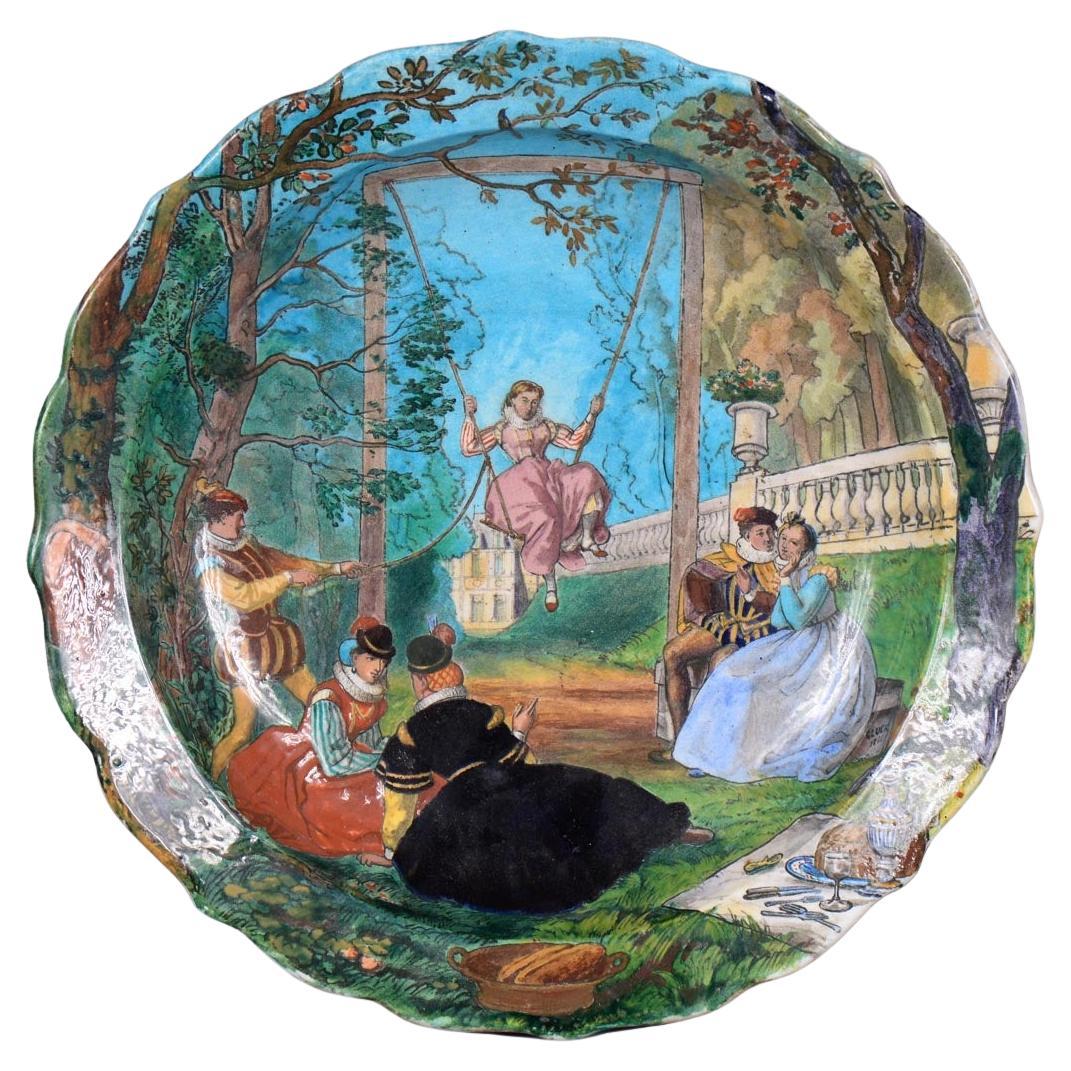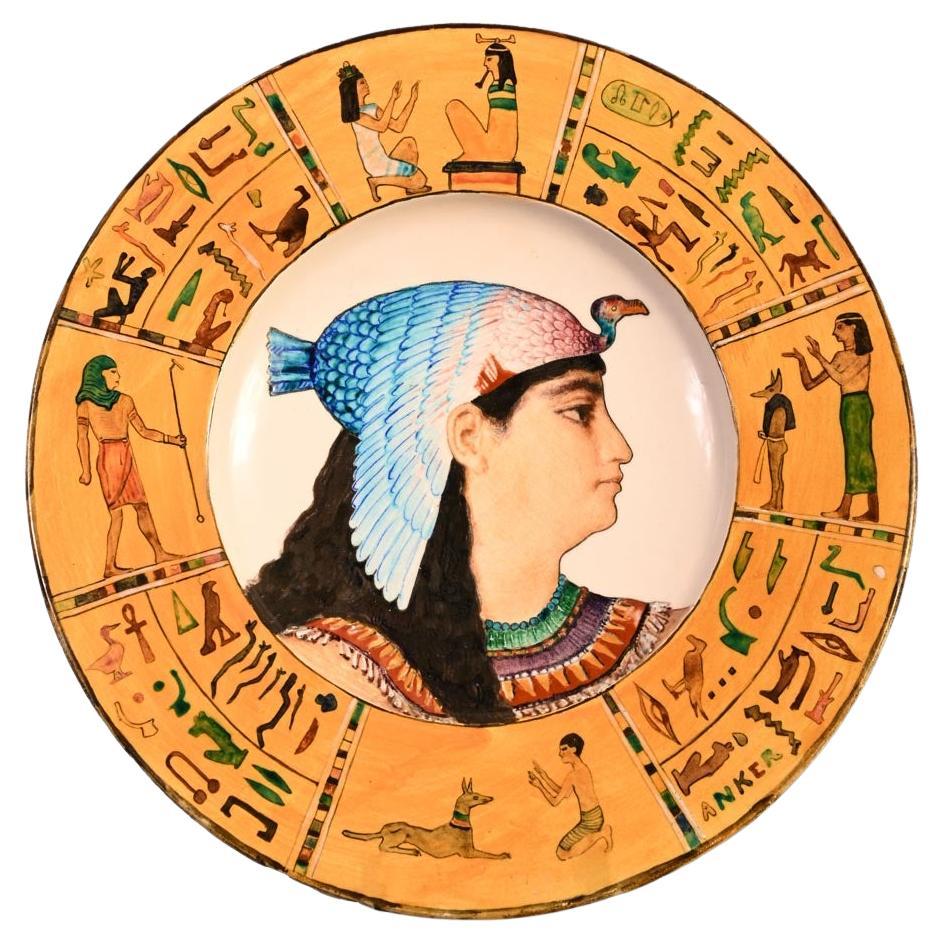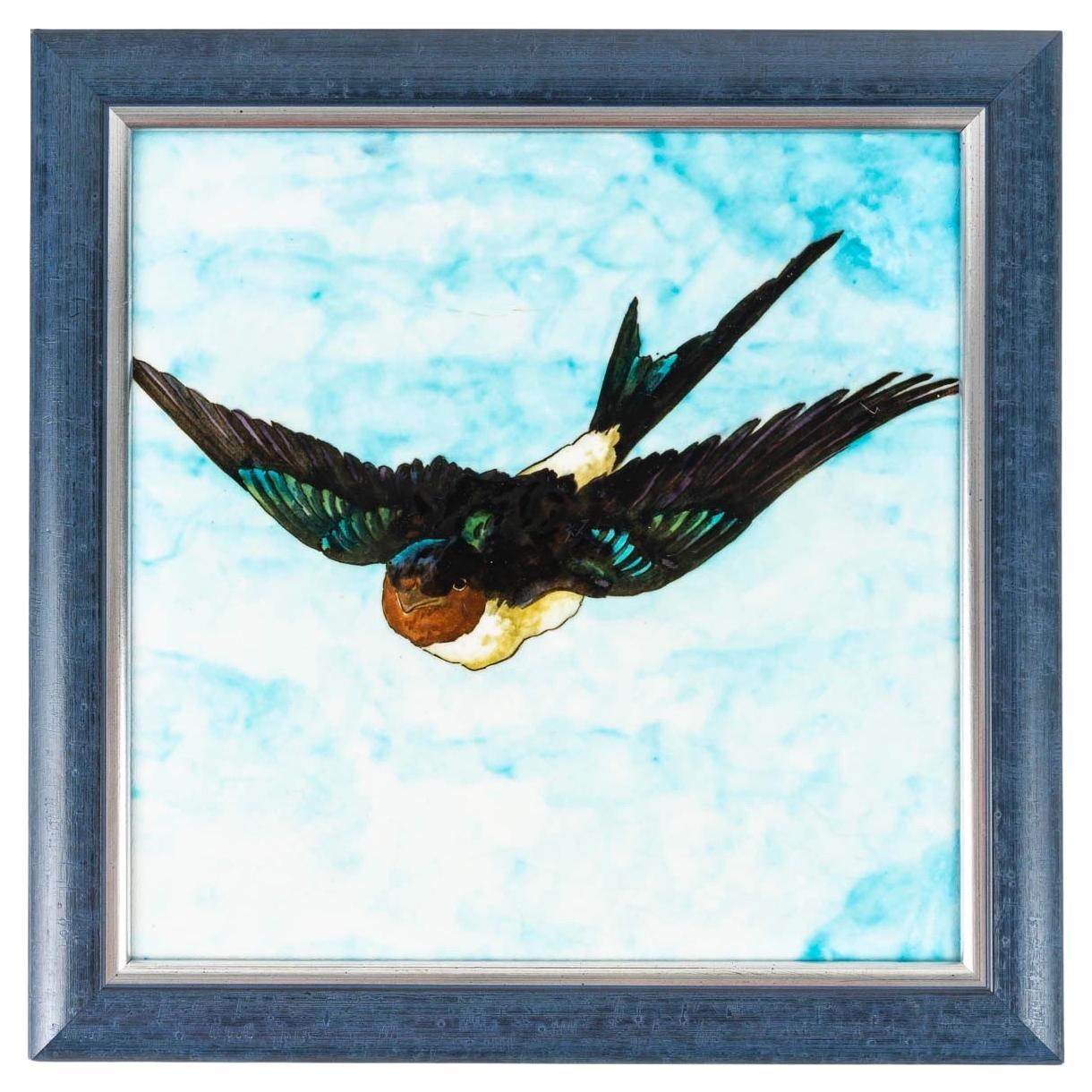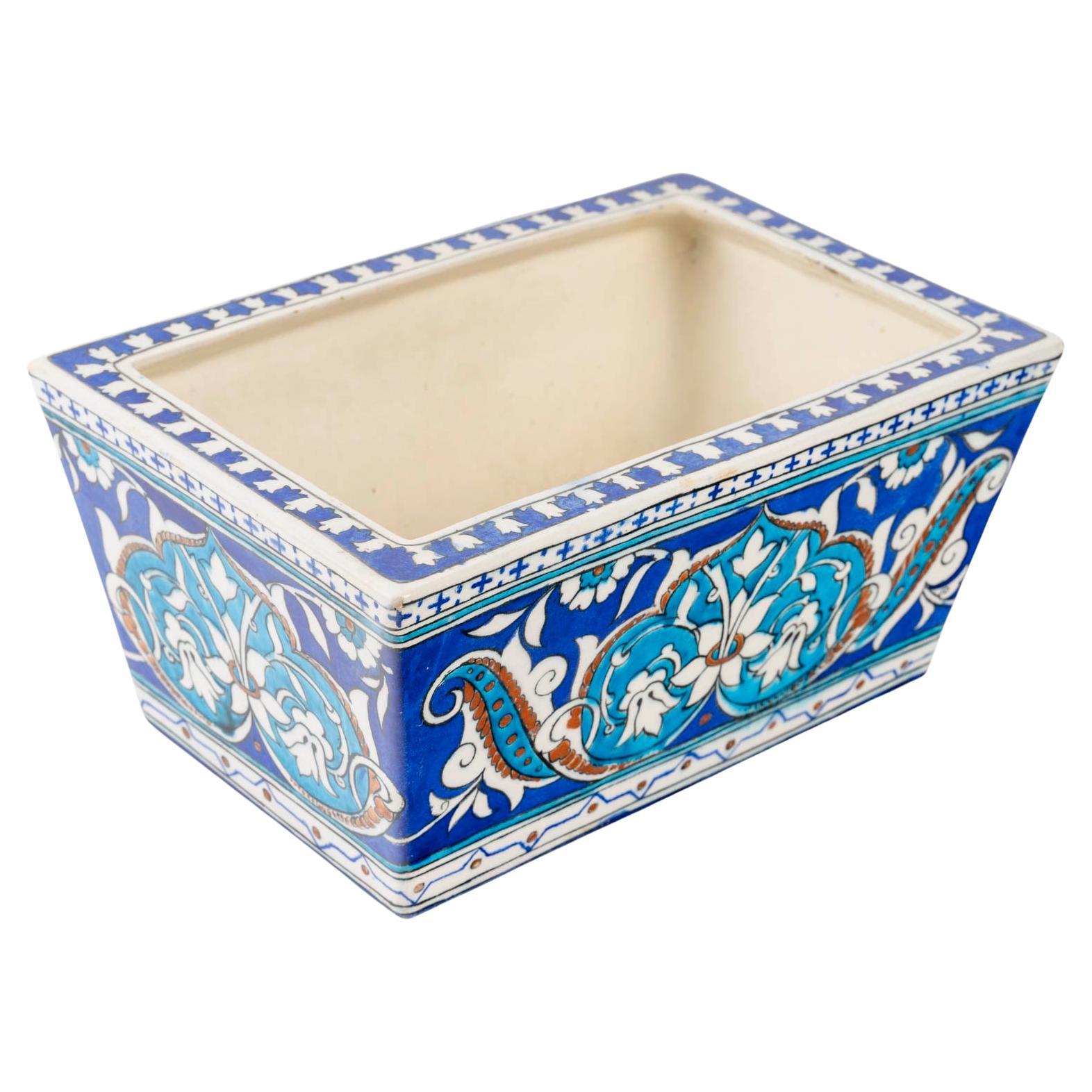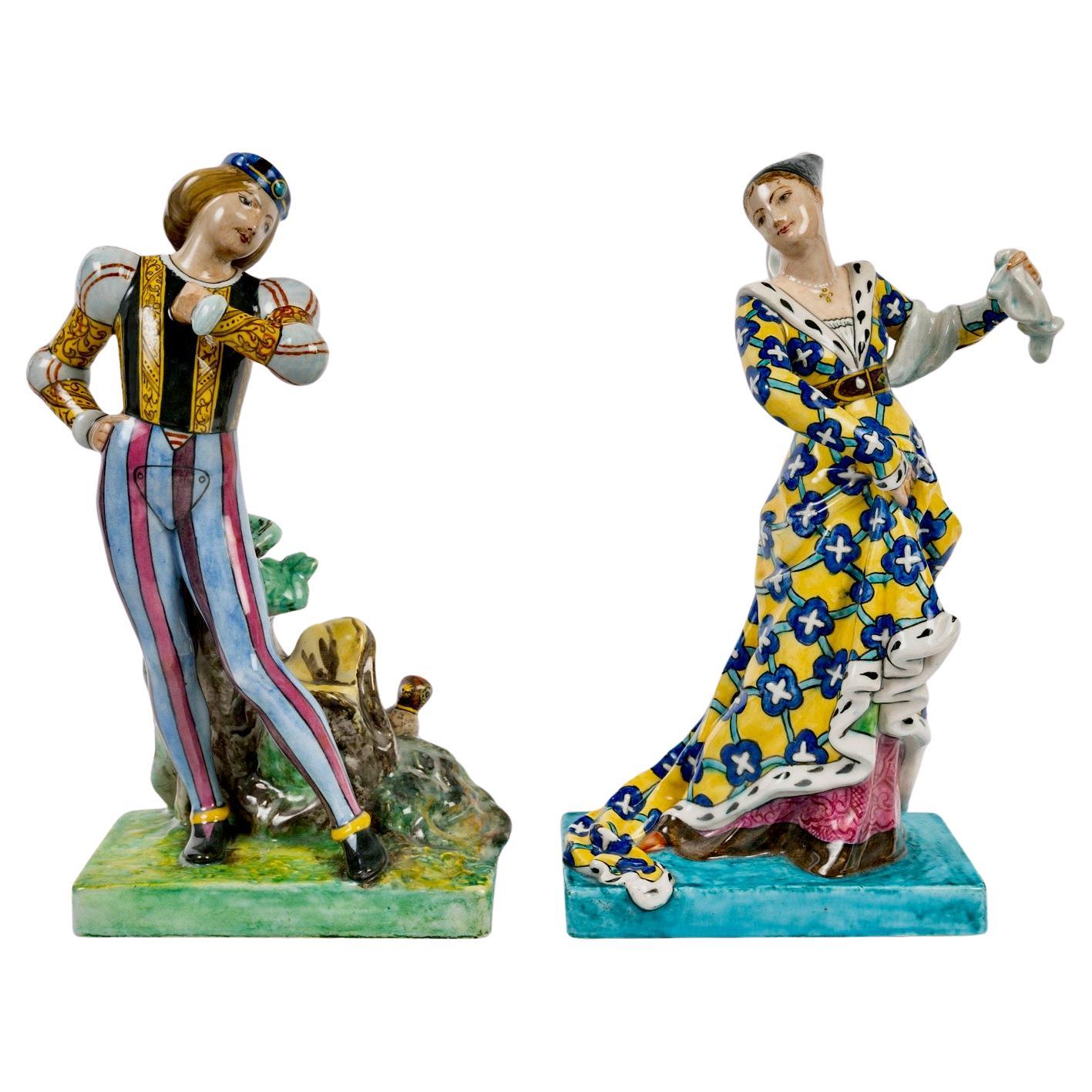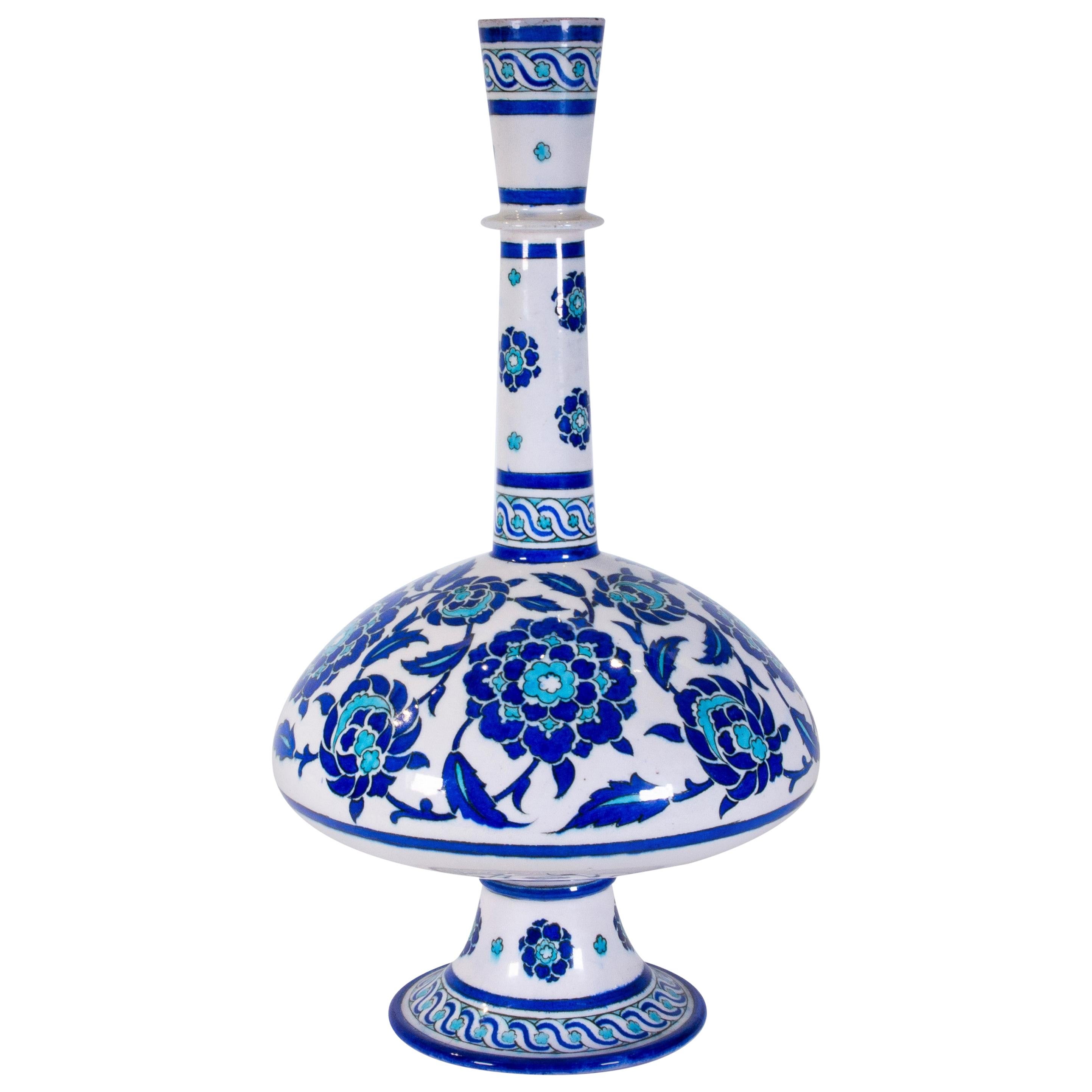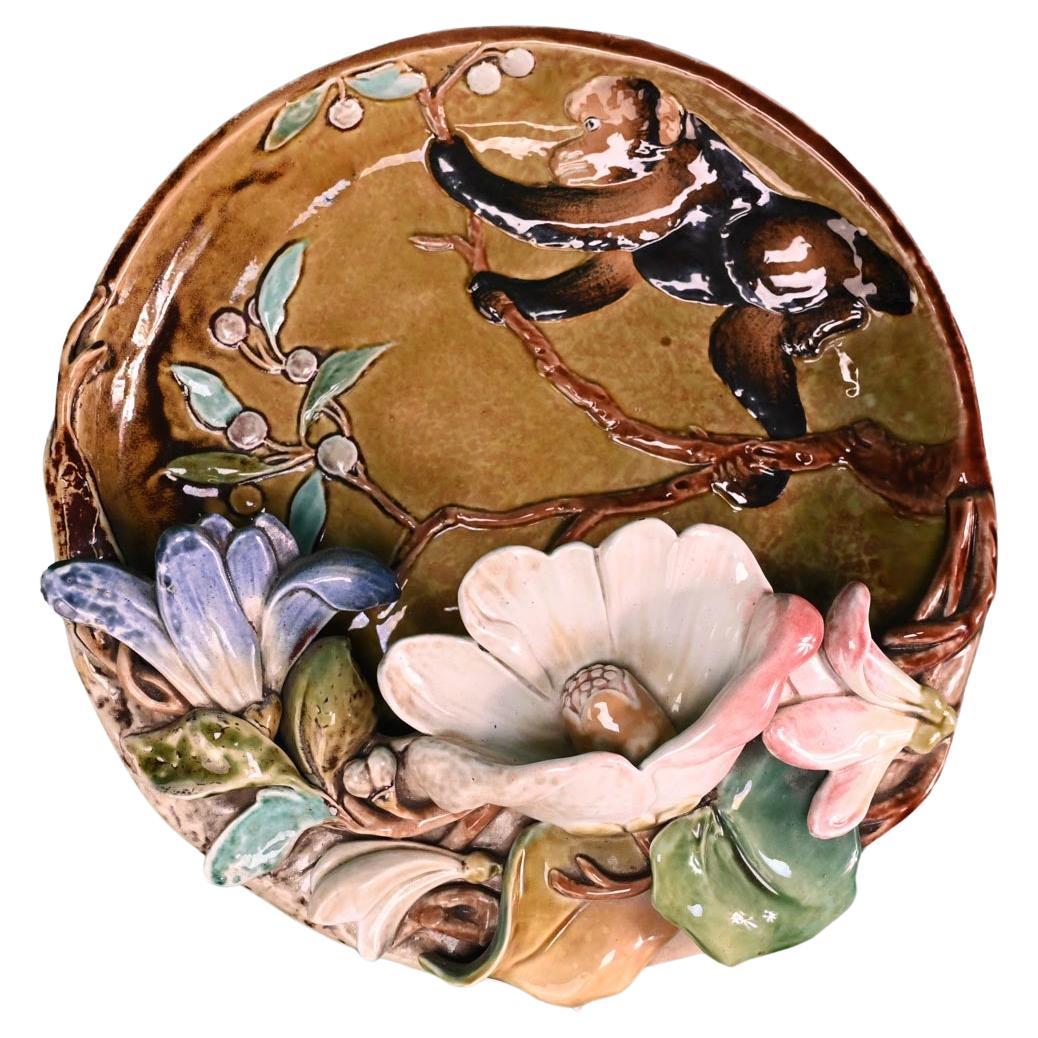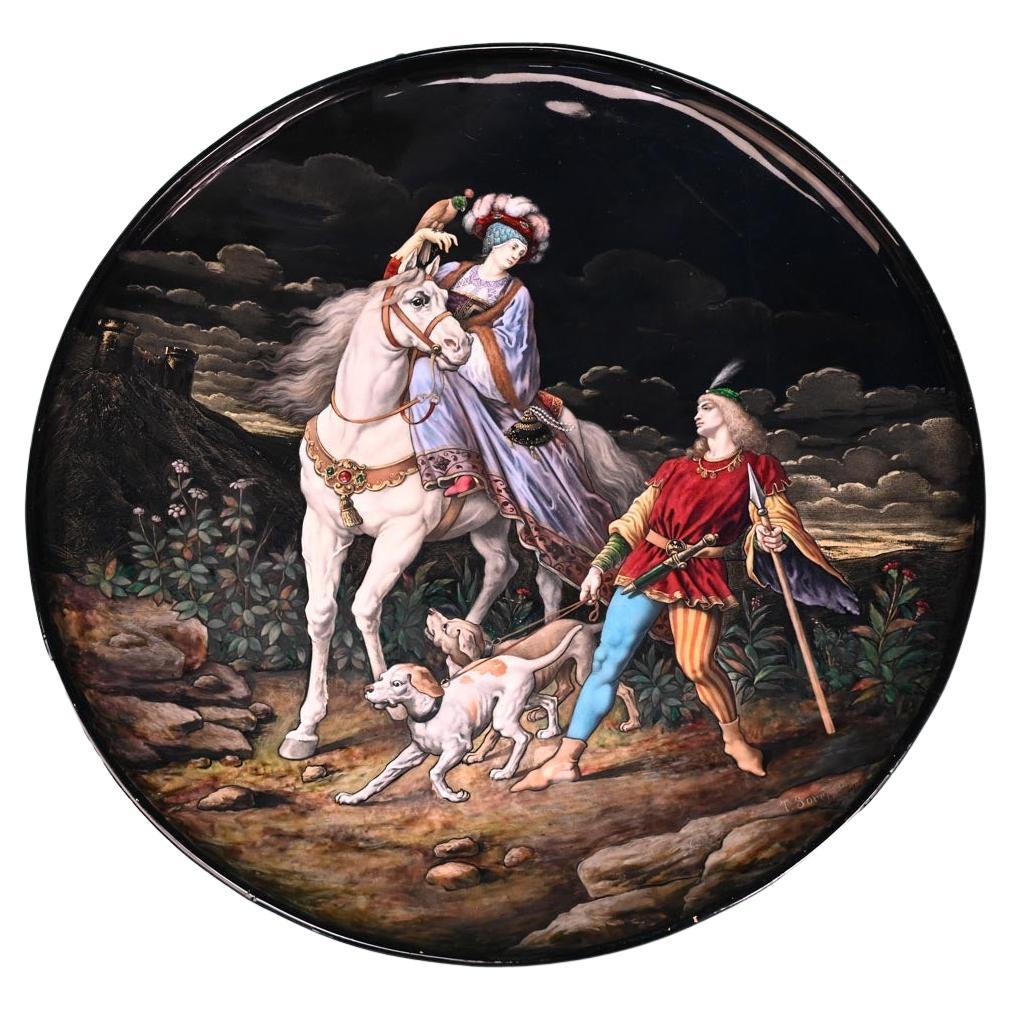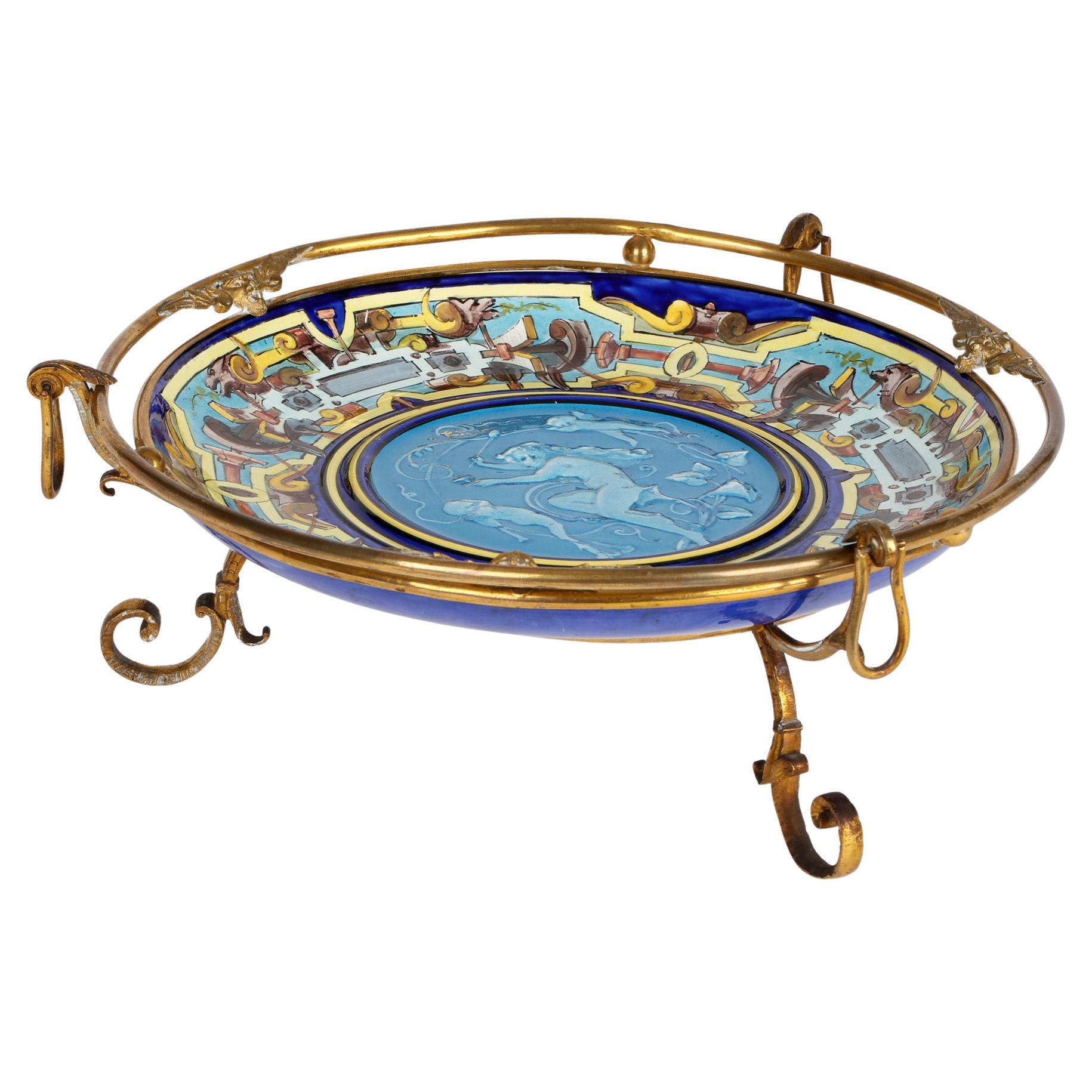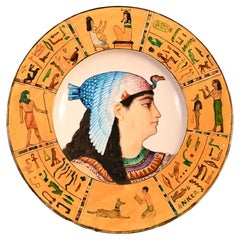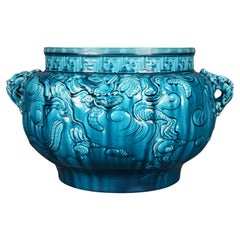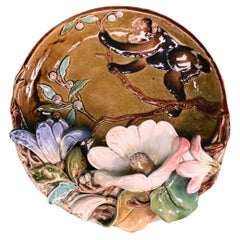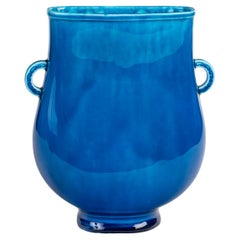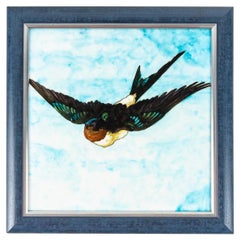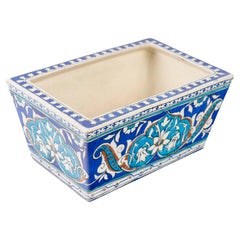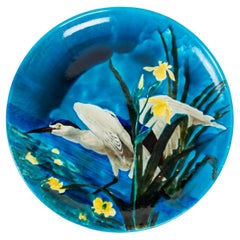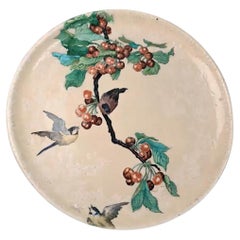
Théodore DECK, Éléonore ESCALLIER, Ornamental Dish With Titmices
View Similar Items
Video Loading
Want more images or videos?
Request additional images or videos from the seller
1 of 12
Théodore DECK, Éléonore ESCALLIER, Ornamental Dish With Titmices
$7,167.93List Price
About the Item
- Creator:Theodore Deck (Artist)
- Dimensions:Height: 2.76 in (7 cm)Diameter: 24.41 in (62 cm)
- Style:Napoleon III (Of the Period)
- Materials and Techniques:Ceramic,Glazed
- Place of Origin:
- Period:
- Date of Manufacture:1871
- Condition:
- Seller Location:SAINT-OUEN-SUR-SEINE, FR
- Reference Number:Seller: 105461stDibs: LU7662240178382
About the Seller
No Reviews Yet
Recognized Seller
These prestigious sellers are industry leaders and represent the highest echelon for item quality and design.
1stDibs seller since 2022
Typical response time: 8 hours
Authenticity Guarantee
In the unlikely event there’s an issue with an item’s authenticity, contact us within 1 year for a full refund. DetailsMoney-Back Guarantee
If your item is not as described, is damaged in transit, or does not arrive, contact us within 7 days for a full refund. Details24-Hour Cancellation
You have a 24-hour grace period in which to reconsider your purchase, with no questions asked.Vetted Professional Sellers
Our world-class sellers must adhere to strict standards for service and quality, maintaining the integrity of our listings.Price-Match Guarantee
If you find that a seller listed the same item for a lower price elsewhere, we’ll match it.Trusted Global Delivery
Our best-in-class carrier network provides specialized shipping options worldwide, including custom delivery.More From This Seller
View AllThéodore DECK, Eugène GLUCK, Ornamental Dish With A Bucolic Scene
By Theodore Deck
Located in SAINT-OUEN-SUR-SEINE, FR
This large dish, fashioned by the great ceramist Théodore Deck and painted by Eugène Gluck, was created in 1866.
Entirely decorative, our piece presents a scene worthy of a paintin...
Category
Antique 1860s French Renaissance Revival Ceramics
Materials
Ceramic
Albert ANKER (painter), Théodore DECK (ceramist), Ornamental Dish “Cleopatra”
By Theodore Deck
Located in SAINT-OUEN-SUR-SEINE, FR
This ornamental dish, adorned with a design inspired by Egyptian art and executed in 1869, is the result of the long-term collaboration between Albert Anker and Théodore Deck.
The S...
Category
Antique Mid-19th Century French Egyptian Revival Ceramics
Materials
Ceramic
Théodore DECK, Large vase of Far Eastern inspiration
By Theodore Deck
Located in SAINT-OUEN-SUR-SEINE, FR
This large turquoise pot holder in glazed earthenware was made by the reknowned ceramist Théodore Deck at the end of the 19th century.
Its beautiful bl...
Category
Antique Late 19th Century French Japonisme Ceramics
Materials
Faience
Émile GALLÉ, Ornamental Dish With A Monkey Climbing Among Flowers
By Émile Gallé
Located in SAINT-OUEN-SUR-SEINE, FR
This highly original polychrome enamel ceramic dish featuring a monkey on a flowering branch was created by Émile Gallé, based on a model designed around 1878-1880.
Considered the f...
Category
Antique Late 19th Century French Art Nouveau Ceramics
Materials
Ceramic
Théophile SOYER, Renaissance-Style Ornamental Dish
By Théophile Soyer
Located in SAINT-OUEN-SUR-SEINE, FR
This enamelled ornamental dish with neo-Renaissance decoration was made by Théophile Soyer in 1880.
The son of enameller Paul Soyer, Théophile Soyer attended the École des Beaux-Ar...
Category
Antique 1880s French Renaissance Revival Ceramics
Materials
Ceramic
B&Cie, Charles POYARD, Félix FLICK, Dish With Portrait of a Berber Woman
By Creil et Montereau
Located in SAINT-OUEN-SUR-SEINE, FR
This faience dish was crafted by the B&Cie factory in Montereau, while its design was conceived and painted by Félix Flick; Charles Poyard likely contributed to the enameling.
This ...
Category
Antique 1870s French Moorish Ceramics
Materials
Ceramic, Faience
You May Also Like
A Théodore Deck (1823-1891) Enamelled Faience Vase circa 1870
By Theodore Deck
Located in Saint-Ouen, FR
An earthenware blue enamelled vase by Théodore Deck with two lateral coves
Archaic Chinese Style
Impressed Uppercase Mark TH.DECK under the base
For similar pieces referred to Th...
Category
Antique 1870s French Japonisme Vases
Materials
Faience
"Swallow" a Théodore Deck (1823-1891) Framed Enameled Faïence Plaque
By Theodore Deck
Located in Saint-Ouen, FR
Théodore Deck (1823-1891) Swallow
A 19th Century French Square Wall Plaque
Polychromic Earthenware very finely hand-painted, designed with a flying swallow
Impressed mark on the reve...
Category
Antique 1870s French Japonisme Decorative Art
Materials
Faience
$3,404 Sale Price
25% Off
Theodore Deck (1823 - 1891) An Iznik Style Enameled Faïence Jardiniere, c.1870
By Theodore Deck
Located in Saint-Ouen, FR
Theodore Deck (1823 - 1891)
An Iznik Style Enameled Faïence Rectangular Jardiniere
Hand-painted with foliages, stylised leaves and flowers in turquoise, cobalt-blue and red outlined ...
Category
Antique 1870s French Islamic Ceramics
Materials
Faience
Théodore Deck (1823-1891), an Impressive 19th Century Faïence Charger
By Theodore Deck
Located in Saint-Ouen, FR
Théodore Deck ( 1823-1891)
Impressive polychromed circular faience charger with hand-painted enameled design of a wader among water lilies and reeds.
Impressed Uppercase Mark Th.Dec...
Category
Antique 1870s French Japonisme Ceramics
Materials
Faience
$7,096 Sale Price
44% Off
Théodore Deck (1823-1891), Courtly Love, Rare Pair of Faience Figures , c.1860
By Theodore Deck
Located in Saint-Ouen, FR
Théodore Deck (1823-1891)
Courtly Love
Polychrome enamelled earthenware
Pair of subjects representing two lovers in the Middle Ages
Each signed below with the stamp “Th.Deck”
Extr...
Category
Antique 1860s French Renaissance Revival Decorative Art
Materials
Faience
$15,052 Sale Price / set
30% Off
Large Theodore Deck Earthenware Bottle Form Vase in the Islamic/Iznik Taste
By Theodore Deck
Located in New York, NY
A large and impressive Theodore Deck Earthenware bottle form vase in the Islamic/Iznik Taste, Impressed "TD" 1870 on the bottom. The narrow circular neck is decorated with dark blue,...
Category
Antique 1870s French Islamic Vases
Materials
Porcelain
